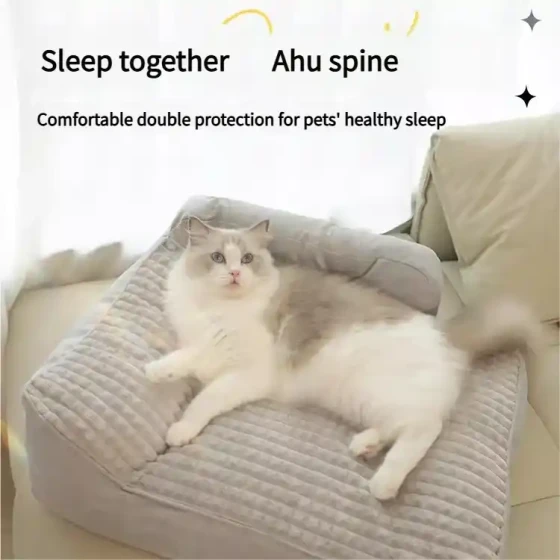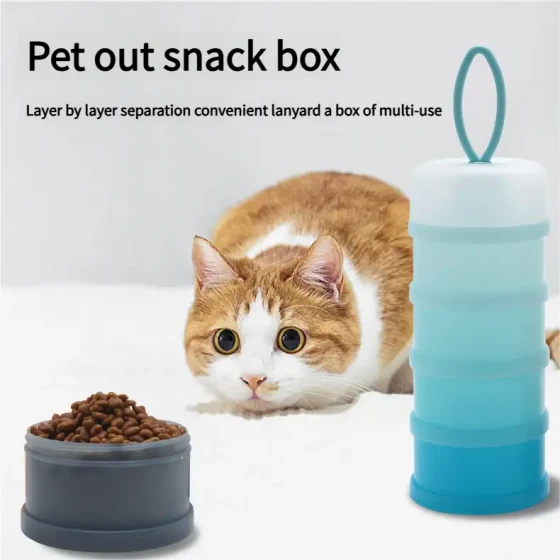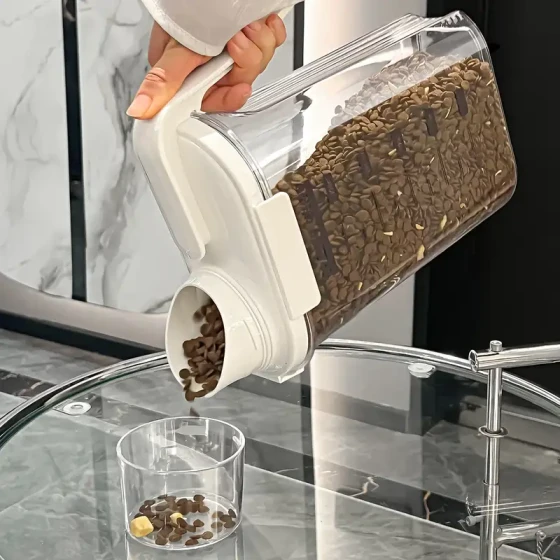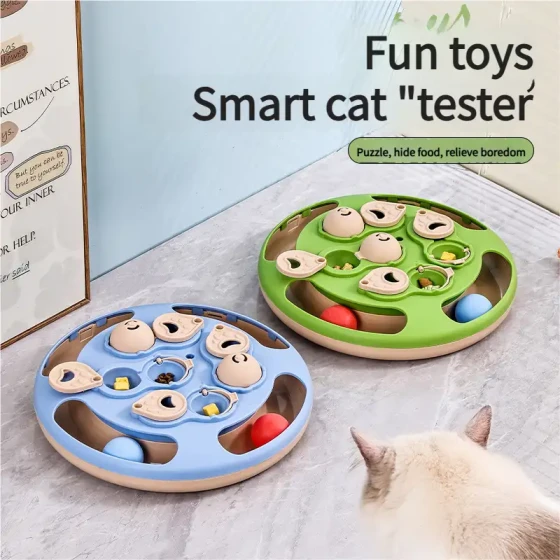Symptoms of Conjunctivitis in Cats_How to Quickly Identify and Treat
Conjunctivitis in cats is neither a big nor a small issue, but it absolutely cannot be taken lightly. Simply put, if your cat's eyes look red, swollen, with excessive discharge that looks like "tears," or if it keeps squinting and is sensitive to light, it is most likely conjunctivitis knocking on the door. This is not just about affecting the "appearance"; if delayed, it could even affect vision and cause more severe consequences.
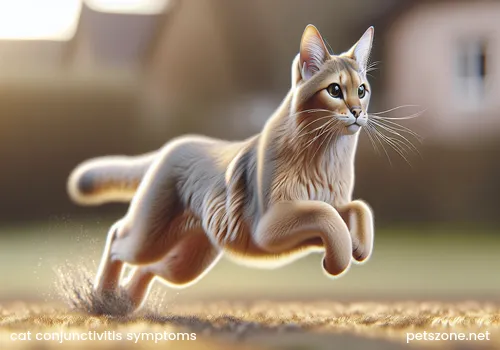
1. Immediate Identification: The "Signals" of Cat Conjunctivitis
Conjunctivitis sounds a bit academic, but it basically means inflammation of the thin membrane covering the inside of the eyelids and the surface of the eyeball (commonly known as the white part of the eye). This membrane usually "hides" very well, but inflammation makes it impossible to conceal.
Cats with conjunctivitis will exhibit some very obvious signs that attentive owners can easily spot:
- Redness and Swelling: This is the most straightforward symptom. You will see the white part of the cat's eye becoming very red and the eyelids may appear swollen. Imagine humans having "rabbit eyes" after staying up all night; it's similar, but the cat's inflammation is more severe.
- Abnormal Discharge: Healthy cats also produce a small amount of eye discharge, but with conjunctivitis, discharge significantly increases and changes in characteristics. From initially clear tears, it may become sticky or even purulent. The color can shift from transparent or pale yellow to dark yellow, green, or brown. When dried, this discharge forms unsightly crusts at the eye corners, sometimes sticking the upper and lower eyelids together, making it hard for the cat to open its eyes.
- Light Sensitivity, Squinting, Frequent Blinking: Eye inflammation causes discomfort and pain; cats instinctively avoid bright light, blink frequently, or squint or even close their eyes to relieve discomfort.
- Protrusion of the Third Eyelid: Cats have a pink "third eyelid" at the inner corner of the eye. Normally unnoticed, but in severe conjunctivitis, it may swell and protrude, sometimes partially or completely covering the eyeball.
- Scratching the Eyes with Paws: Itching or pain may cause cats to scratch or rub their eyes with paws, which can easily cause secondary injuries such as corneal scratches.
- Accompanied Upper Respiratory Symptoms: Sometimes, conjunctivitis is not isolated; it may be part of a more general disease like "feline viral rhinotracheitis" (FVR). If, besides eye problems, your cat is sneezing, has a runny nose, decreased appetite, or lethargy, you should be more alert.
2. Unraveling the Mystery: The Real "Culprits" Behind Conjunctivitis
Don't think redness, swelling, and tearing mean just "heat." The causes of feline conjunctivitis are far from simple, hiding complex "waters" beneath. Broadly, causes can be divided into infectious and non-infectious types:
- Infectious Causes: These are the most common culprits.
- Viruses: Feline Herpesvirus (FHV-1) is the most common cause of cat conjunctivitis, especially chronic or recurrent types. This virus is tricky; once infected, it lies dormant in the cat's body and can relapse under stress (such as environmental changes, vet visits, or new family members) or immune suppression. Feline calicivirus is another possible viral cause.
- Bacteria: Bacterial infections often follow viral infections but can also be primary. Common pathogens include Chlamydophila felis and Mycoplasma spp., directly causing conjunctivitis. Staphylococcus and Streptococcus species may also be involved.
- Other Pathogens: Rarely, fungi or parasites (like nematode worms) may cause conjunctivitis, especially in outdoor cats.
- Non-infectious Causes:
- Foreign Bodies or Trauma: Sand, dust, grass seeds accidentally entering the eye, or scratches and bumps during play can irritate the conjunctiva and trigger inflammation.
- Allergies: Like humans, cats can be allergic to environmental pollen, dust, mites, etc., leading to allergic conjunctivitis.
- Eyelid Structural Abnormalities: Conditions such as entropion (inward curling of eyelashes that rub against the eyeball) cause continuous irritation and inflammation.
- Other Systemic Diseases: Sometimes conjunctivitis accompanies systemic diseases such as immune system issues or severe internal diseases (liver, kidney problems). Even other eye diseases (like corneal ulcers, glaucoma, or eye tumors) can secondarily cause conjunctivitis.
By now you understand that eye redness and swelling may look simple but the underlying causes are complex and tangled. This is why we cannot "mess around" ourselves and must promptly take cats to the vet when problems are noticed.
3. Defend and Counterattack: How to Quickly Identify and Treat?
"Quick identification" has been covered almost thoroughly above—just open your eyes wide and observe carefully. Once you notice abnormalities, don’t hesitate, act immediately!
For "quick treatment," the focus is not on what you can do at home but on promptly seeking professional medical help.
- Immediate Veterinary Visit, No Delay: I know some may think it’s troublesome and costly to go to the vet for a "minor" illness, but with cat eye diseases, really don’t skimp. Veterinarians will perform detailed exams (including eye check, tear tests, corneal staining, and possibly bacterial/viral testing) to determine the exact cause of conjunctivitis. Remember, targeted treatment is key—viral, bacterial, allergic, or foreign body treatments differ completely. Using random medications yourself can be ineffective at best and worsen the condition at worst.
- Follow Prescribed Medication and Be Persistent: After diagnosis, vets usually prescribe eye drops or ointments. These may be antibiotics, antivirals, anti-inflammatories, or other drugs depending on the case. Always strictly follow the vet’s instructions, including dosage and frequency. For example, many eye drops must be applied several times daily for 7-14 days, sometimes longer. Never stop medication just because symptoms improve, as relapse is common.
- Master Correct Medication Application Technique: Applying eye drops/ointment to cats can be challenging for beginners. Cats may struggle, shake their heads, or paw at you. Patience and skill are needed.
- Gently soothe your cat first to relax it. One person can hold the cat, another applies medication.
- Use a clean cotton ball soaked with warm saline or vet-recommended eye wash to gently clean eye discharge and crusts around the eyes.
- With one hand gently pull back the cat’s eyelid, use the other to apply drops or ointment just above the eye, avoiding contact between bottle tip and eye to prevent contamination or injury.
- After applying, gently close the cat’s eyelids to help spread the medication evenly.
- After finishing, immediately reward the cat to associate medication with positive experience.
- Necessary Auxiliary Measures:
- Elizabethan Collar: If the cat keeps scratching its eyes, an Elizabethan collar is essential to prevent self-inflicted worsening.
- Maintain Clean Environment: A clean and hygienic environment helps prevent and promote recovery.
- Supplement Nutrition and Immune Support: For viral infections, vets may recommend supplements like lysine to inhibit virus replication and boost immunity.
4. Prepare in Advance: Prevention is Better Than Cure
Although some causes cannot be completely avoided, in many cases, daily care and prevention can greatly reduce the risk of conjunctivitis in cats:
- Regular Vaccination: Feline triple vaccine prevents feline herpesvirus and calicivirus infections, two common causes of conjunctivitis.
- Keep Home Environment Clean: Regular cleaning of the cat’s living area reduces dust and possible irritants.
- Pay Attention to Eye Hygiene: For certain breeds (such as Persians, Garfield cats) prone to tearing, or cats with frequent discharge, use pet-specific eye washes for regular cleaning with gentle motions.
- Avoid Contact with Sick Cats: Infectious conjunctivitis (especially viral and bacterial) is highly contagious among cats. If you have multiple cats and one is sick, isolate it and monitor the others’ eyes closely.
- Reduce Stress: As mentioned, feline herpesvirus tends to relapse under stress. Provide your cat with a stable and safe environment to reduce unnecessary stress.
- Prevent Injuries: Be mindful of the cat’s play environment and avoid sharp objects. Regularly trim claws to reduce the risk of scratching eyes.
In summary, conjunctivitis is a common feline eye disease with varied symptoms and complex causes. As responsible owners, what we should do is not self-diagnose and treat, but quickly identify abnormal signs and promptly take the cat to a professional vet. Cooperate with the veterinarian’s diagnosis and treatment plan, along with meticulous daily care, to help your cat quickly regain those bright and captivating eyes. After all, their eyes hold the stars and the sea within.
